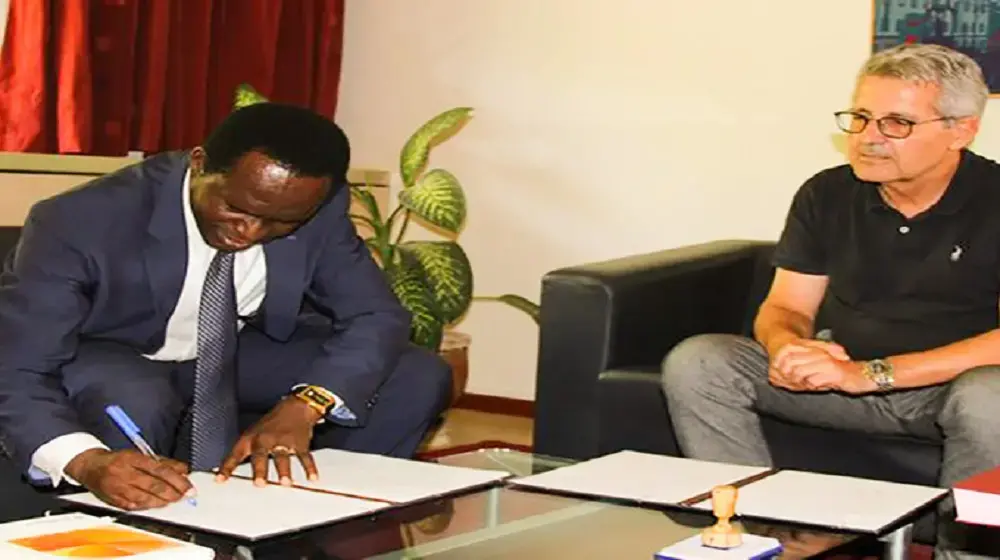Lome (Togo) - In a bid to end a twenty-nine year dataless period, Togo carried out its 4th General Population and Housing Census (RGPH) in 2010, with financial and technical support from the United Nations Population Fund (UNFPA). The results enabled the west African country to redraw its electoral districts ahead of the legislative and local elections in 2013.
This "discontinuity” in the census follows several deferments since 1991, mainly due to the national political situation marred by social unrests, and the fact that major donors suspended their international cooperation with the country.
A side from its technical aspect, the RGPH also has political implications because the collected data are crucial in the demarcation of administrative and electoral boundaries, especially with regard to the number of seats in the National Assembly, the determination of constituencies etc.
Thus, at the end of the exercise, the number of constituencies in Togo increased to 30 and the number of seats in the National Assembly rose from 81 to 91, just in time for the parliamentary elections held in July 2013.
Government’s commitment was decisive

The whole census process started in April 2006 when the project document was drawn up after the Togolese government convened, upon UNFPA’s recommendation, a strategic information meeting for development partners.
The government agreed to bear most of the cost of the exercise given that the main goal of the project is to have reliable and disaggregated data for planning and monitoring/evaluation of development programmes that will help it in its policy.
A "General Population and Housing Census" budget line was then included in the general budget for the period 2008-2012. The Togolese government covered 42.4% of total funding estimated at CFAF 3.5 billion (US$7 million), followed by the EU (33.7%), UNFPA (18.0%), UNDP (3.9%), China (1.3%) and UNICEF (0.6%).
The office of President of the Republic closely followed the operation, which facilitated the rapid resolution of problems encountered in the process.
Moreover, the government invited financial partners to the field to witness the success of the census. Thus, European Union (EU) Ambassador to Togo Patrick Spirilet and Deputy UNFPA Representative separately visited data collection sites alongside the Minister of Planning, Development and Urban Planning. The media’s extensive coverage of these events helped enlighten and reassure the population, which led to them (the population) fully adhering to the process, thus encouraging field staffs in their work.
UNFPA/Togo’s strategic positioning and catalyst role
The UNFPA played a decisive role in the organization and conduct of the fourth RGPH. All stakeholders acknowledged this leadership role. The operation materialised thanks to the Country Office’s political dialogue to convince national policy-makers of the importance of data for planning, implementation and monitoring/evaluation of development policies and programmes. Furthermore, UNFPA has been at the forefront of advocacy for the mobilization of resources from other development partners.
The signing of the project document by the Togolese government and UNFPA in February 2007 and the 21 July 2008 presidential Decree on holding the 4th RGPH comforted development partners who were convinced not only by the national authorities’ determination in conducting this operation but also by the UNFPA’s key role in the operation. In addition, the EU allowed UNFPA to manage its €1,975,000 contribution.
Based on the guidelines of the 2010 census round, the preliminary results were delivered in April 2011, five months after the counting while the overall final results were handed over in December 2011 i.e. one year after the counting.
4th RGPH major achievements
In 2010, Togo had a population totalling 6,191,155 against 2,719,567 in 1981, representing an average annual growth rate of 2.8% over the period 1981-2010: This highlighted that the Togolese population has more than doubled in 29 years.
However, the gender structure remained virtually unchanged with 51.4 % women and 48.6 % men against 51.3 % and 48.7% respectively in 1981. The population is predominantly rural with 62.3% against 37.7 % urban.
The Togolese population is young with 60% under 25 years old and 42% under 15 years old while the elderly-60 years and above- represent 5.5%. The potential labour force (15-64 years) represents 54 % of the population.
Overall, there is a significant change in the age structure of the population: in fact, in 1981, under 25 years old accounted for 67 % of the total population against 60% in 2010; people under 15 years old accounted for 50 % in 1981 against 42% in 2010. This structural change confirms the recent decline in fertility.
Once again, UNFPA played its leading role in Togo as it does in all countries by helping to collect, process and use demographic data to foresee future challenges.
With contribution from Kanazogoh Mensah, National Programme Officer-Population and Development, UNFPA Togo




